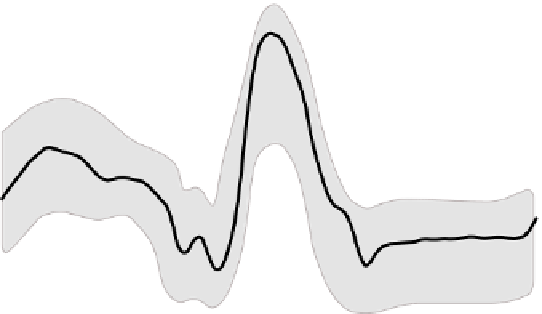Geoscience Reference
In-Depth Information
100
40
80
35
30
60
25
% O
2
40
20
15
20
10
5
0
0
0
100
200
300
400
500
600
Age (millions of years)
Figure 11.3. Concentrations of oxygen through the Phanerozoic eon as calculated from
rock abundance data. redrawn from Berner and Canfield (1989), using the time scale
known at the time the paper was published.
sion seen during the Carboniferous and Permian Periods. This oxygen
increase was driven by the massive deposition of organic carbon in coal
deposits. This, of course happened for a reason, or more likely, for a
couple of reasons. The first is that land plants, which probably origi-
nated in the early Ordovician Period, diversified through the Silurian
Period (see the Preface for a time scale), and by the early Carboniferous
Period had grown in size and greatly expanded onto the continents. In
order to stand tall, plants developed a series of tough organic molecules
like lignin and cellulose, and these tend to resist microbial decay, espe-
cially when accumulated in oxygen-free environments like sediments.
Thus, plant evolution played a role. The specifics of paleogeography
were likely also important. During the Carboniferous and Permian Pe-
riods vast expanses of low-lying swampland collected and buried mas-
sive amounts of organic plant debris, and this is why so much coal was

































